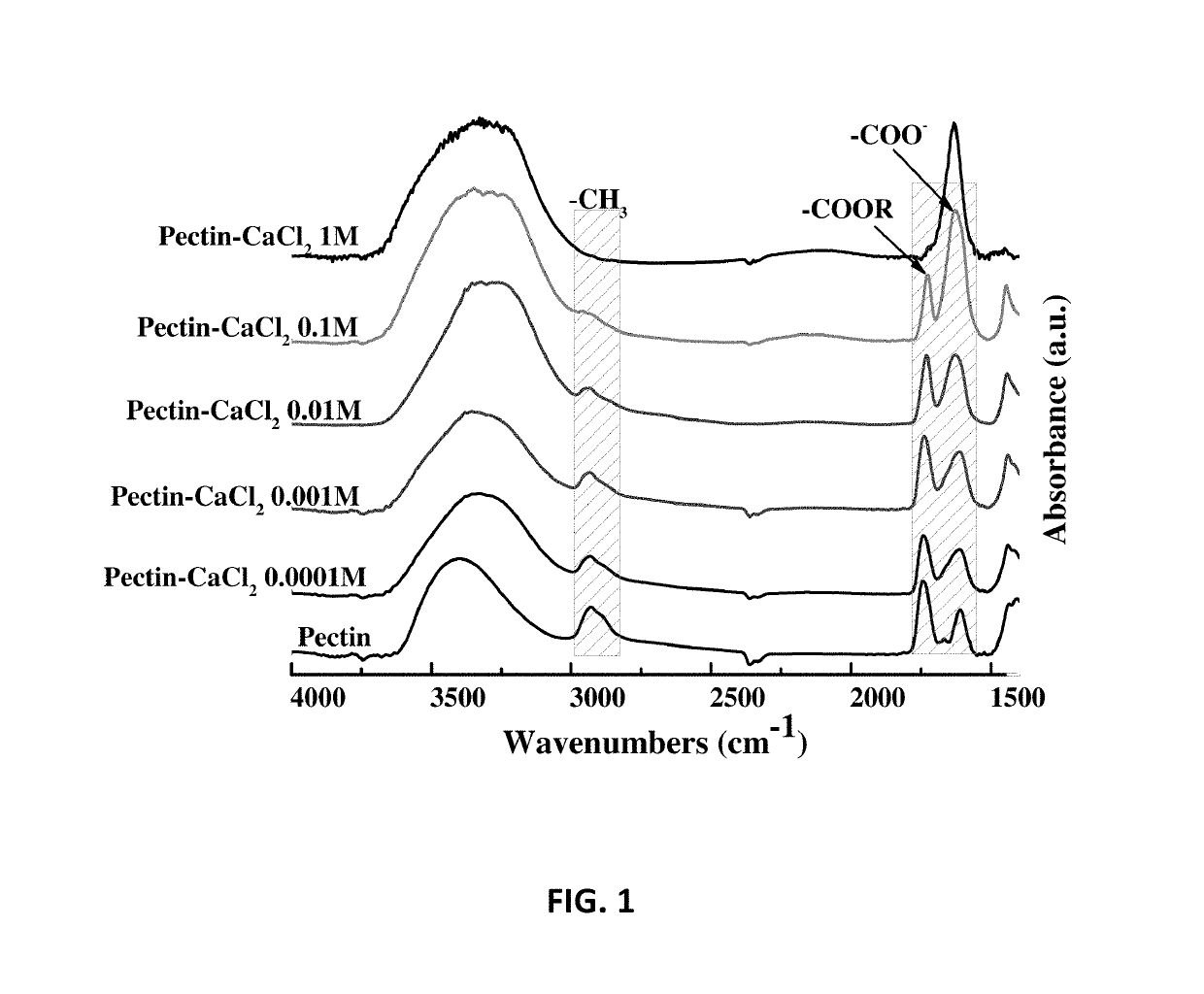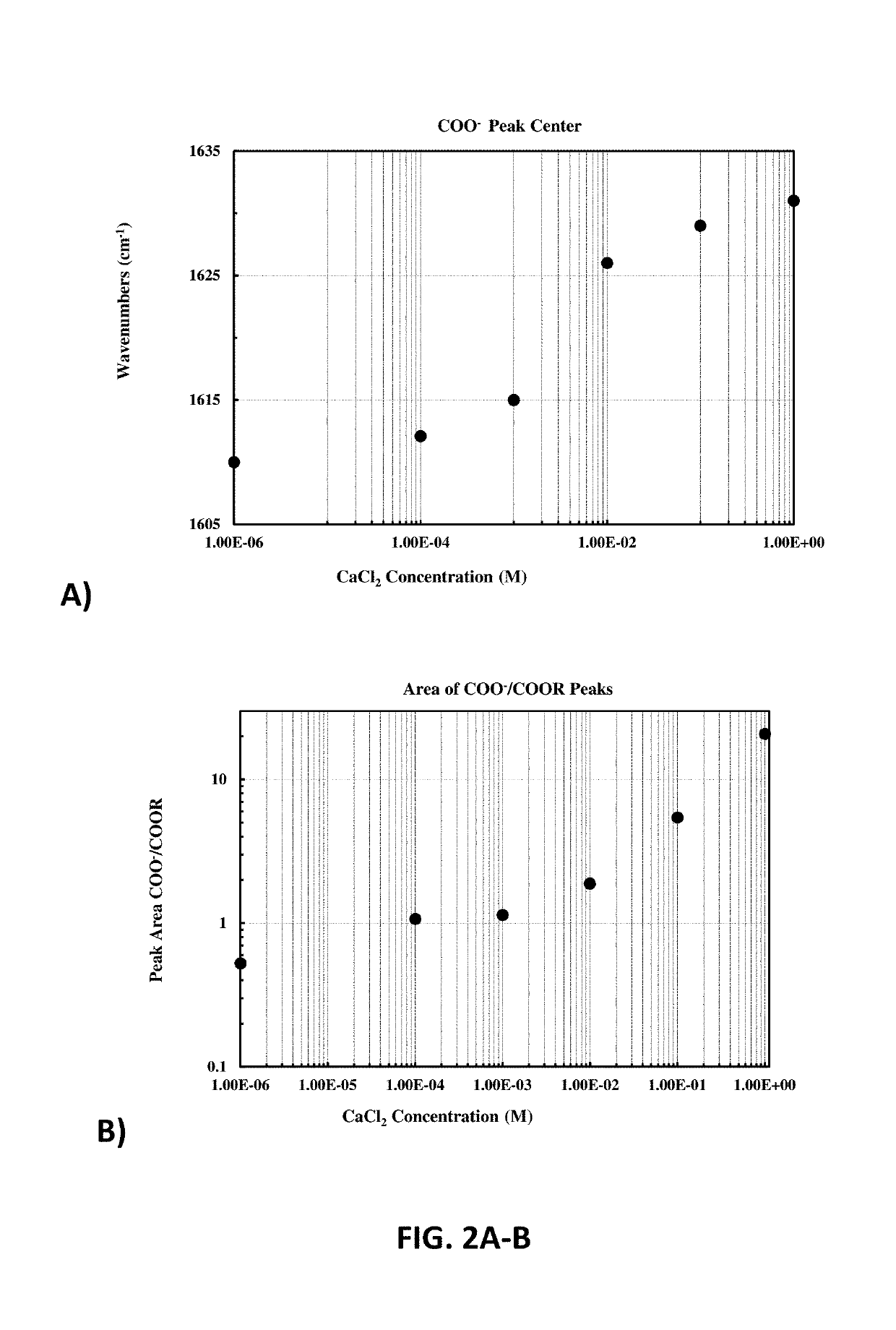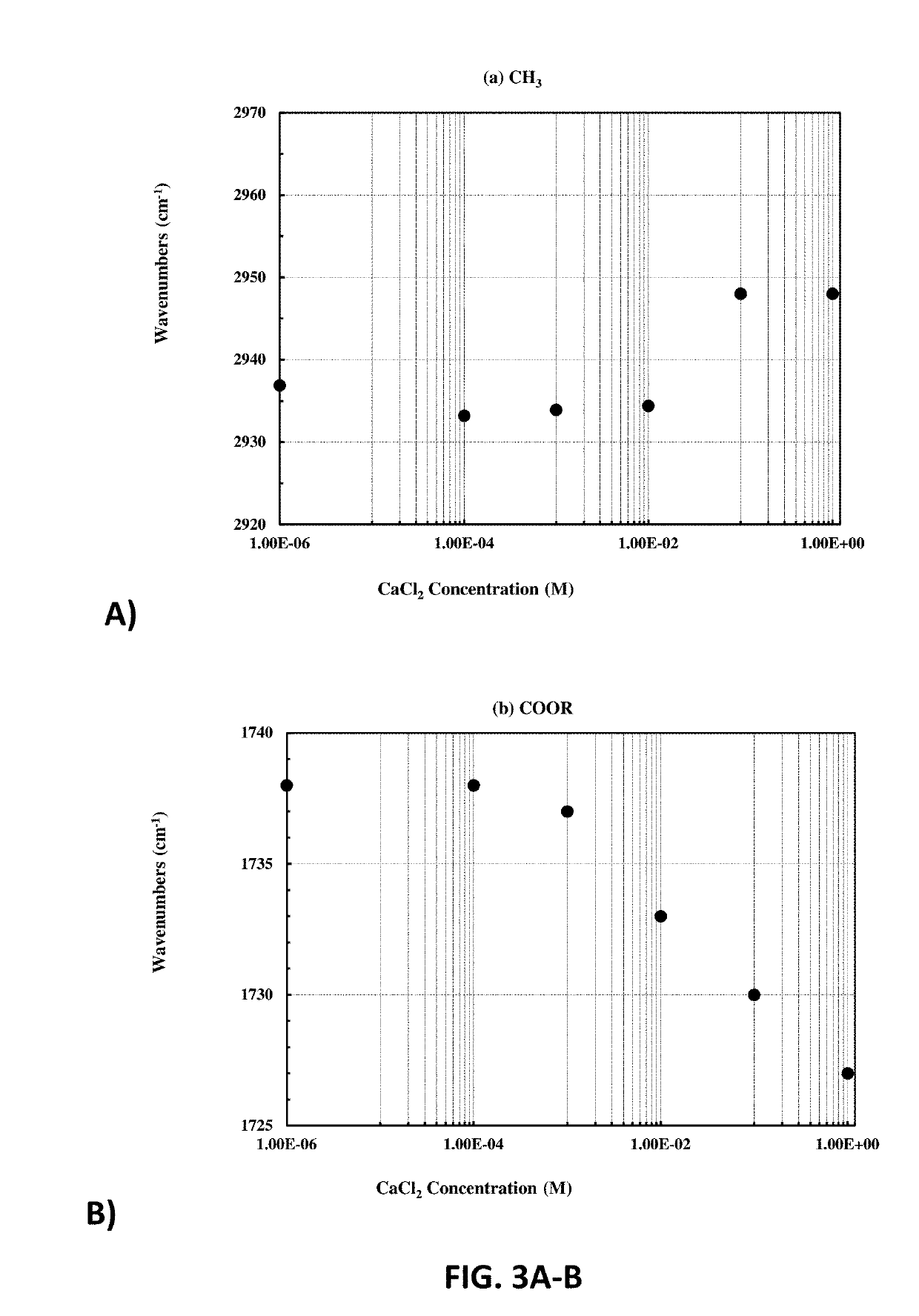Advanced thin protective films
a technology of protective film and thin film, applied in the field of protective film, can solve the problems of coating expulsion of water and collapse of coating
- Summary
- Abstract
- Description
- Claims
- Application Information
AI Technical Summary
Benefits of technology
Problems solved by technology
Method used
Image
Examples
example 1
Pectin Polysaccharides
[0054]One strategy for preparing thin coatings is to first cross-link pectin in an aqueous solution in same manner as preparing bulk gels, and then to post-process the gel into a coating. A more direct strategy, however, is to cross-link in situ a preformed coating of pectin. The latter is preferable to post-processing of a bulk gel in that it allows better control over both thickness and cross-link density. Coatings prepared in this manner display properties distinct from bulk prepared gels, as is common for gels prepared at surfaces and interfaces. (Mateescu, A.; Wang, Y.; Dostalek, J.; Jonas, U., Thin hydrogel films for optical biosensor applications. Membranes 2012, 2 (1), 40-69; Stuart, M. A. C.; Huck, W. T.; Genzer, J.; Muller, M.; Ober, C.; Stamm, M.; Sukhorukov, G. B.; Szleifer, I.; Tsukruk, V. V.; Urban, M., Emerging applications of stimuli-responsive polymer materials. Nature materials 2010, 9 (2), 101-113; Lin, G.; Chang, S.; Kuo, C. H.; Magda, J.; S...
example 2
Cutin Thin Films
[0094]FIG. 14A-F depicts images of natural cutin. Images of natural cutin: The 3 top images (FIGS. 14A, B, C) are from the cutin layers showing reflecting and protecting properties. The lower right picture also corresponds to cutin (FIG. 14D). The small lower left images were taken at high mag. (FIGS. 14E& F). The wrinkles are surface waxes. The smooth region shows cutin nanolayers.
[0095]Natural cutin polymeric arrays are found on the outer surfaces of leaves and shoots of cacti. In natural processes, cutin, a non-living substance, results from the polymerization of fatty acids in the presence of oxygen. In particular, the composition of cutin found in the outer layer of cactus pads and shoots is of interest in 2-D layered technology development. Cactus epidermis and cuticles are capable of withstanding UV radiation damage over long periods of time (>100 years), and they tolerate relatively high and low temperatures, endure abrupt changes of temperature, withstand wa...
PUM
| Property | Measurement | Unit |
|---|---|---|
| Temperature | aaaaa | aaaaa |
| Temperature | aaaaa | aaaaa |
| Fraction | aaaaa | aaaaa |
Abstract
Description
Claims
Application Information
 Login to View More
Login to View More - R&D
- Intellectual Property
- Life Sciences
- Materials
- Tech Scout
- Unparalleled Data Quality
- Higher Quality Content
- 60% Fewer Hallucinations
Browse by: Latest US Patents, China's latest patents, Technical Efficacy Thesaurus, Application Domain, Technology Topic, Popular Technical Reports.
© 2025 PatSnap. All rights reserved.Legal|Privacy policy|Modern Slavery Act Transparency Statement|Sitemap|About US| Contact US: help@patsnap.com



